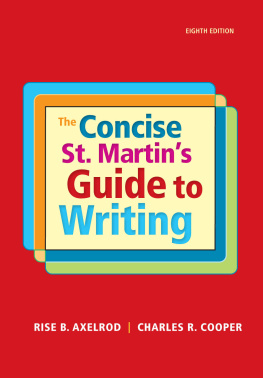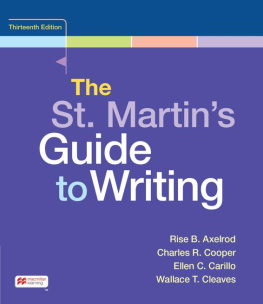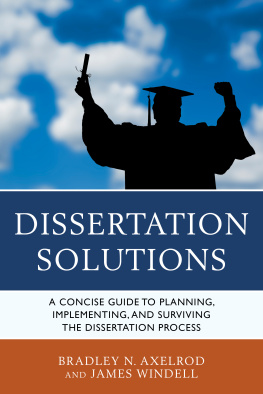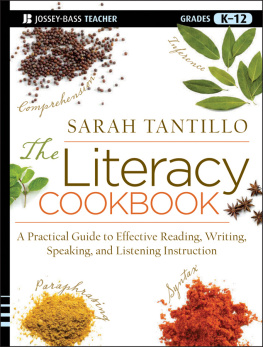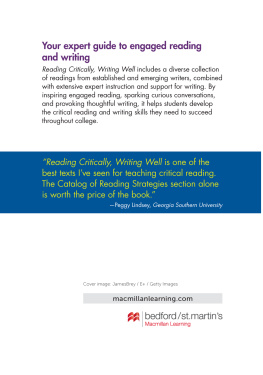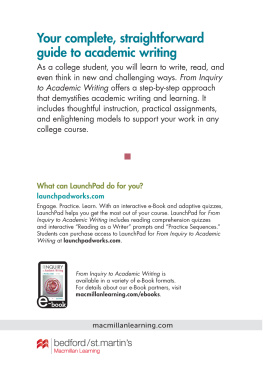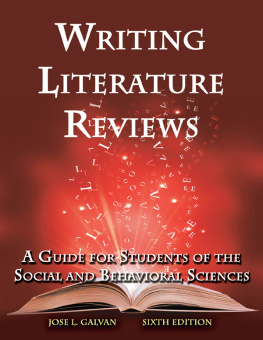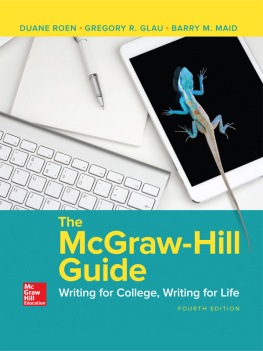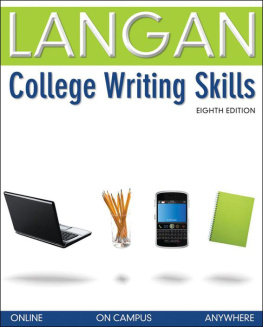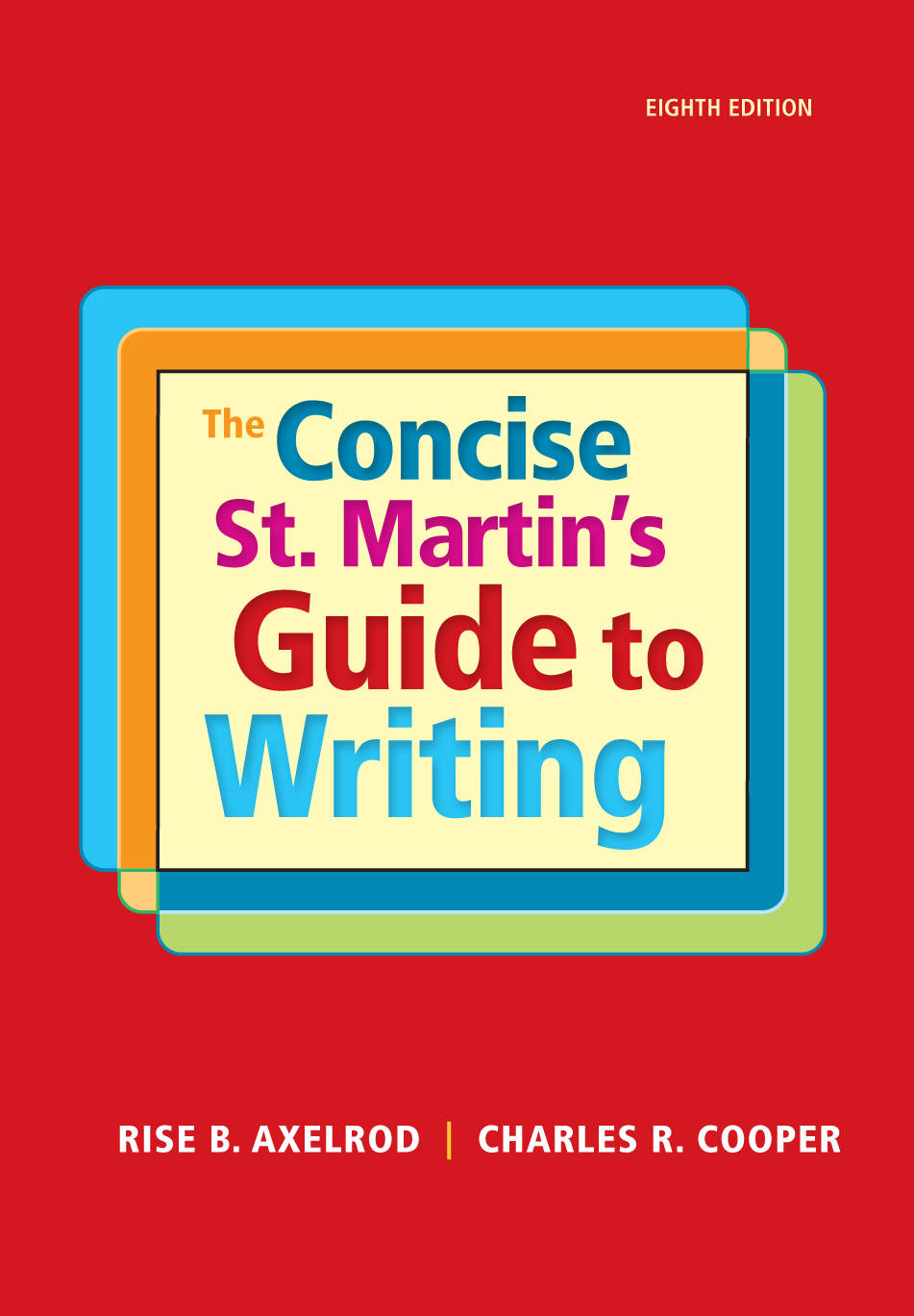
The cover page shows the following information:
On the right, the title of the book is mentioned as The St. Martins Guide to Writing Concise along with the edition on top right as EIGHTH EDITION. The names of the authors are mentioned below as RISE B. AXELROD and CHARLES R. COOPER.
The following information is listed on the spine between the left and right parts of the book:
EIGHTH EDITION
The Concise St. Martins Guide to Writing
AXELROD
COOPER
Logo of bedford/st.martins
Brief Contents
The Concise St. Martins Guide to Writing
EIGHTH EDITION
The Concise St. Martins Guide to Writing
Rise B. Axelrod
University of California, Riverside
Charles R. Cooper
University of California, San Diego

For Bedford/St. Martins
Vice President, Editorial, Macmillan Learning Humanities: Edwin Hill
Senior Program Director for English: Leasa Burton
Program Manager: Molly Parke
Marketing Manager: Vivian Garcia
Director of Content Development: Jane Knetzger
Executive Development Manager: Jane Carter
Developmental Editor: Leah Rang
Senior Content Project Manager: Peter Jacoby
Content Workflow Supervisor: Joe Ford
Production Supervisor: Robin Besofsky
Media Project Manager: Melissa Skepko-Massi
Editorial Services: Lumina Datamatics, Inc.
Composition: Cenveo Publisher Services.
Photo Editor: Angela Boehler
Permissions Editor: Jen Roach
Senior Art Director: Anna Palchik
Text Design: Jerilyn Bockorick
Cover Design: John Callahan
Copyright 2018, 2015, 2012, 2009 by Bedford/St. Martins.
All rights reserved. No part of this book may be reproduced, stored in a retrieval system, or transmitted in any form or by any means, electronic, mechanical, photocopying, recording, or otherwise, except as may be expressly permitted by the applicable copyright statutes or in writing by the Publisher.
2 1 0 9 8 7
f e d c b a
For information, write: Bedford/St. Martins, 75 Arlington Street, Boston, MA 02116
ISBN 978-1-319-10763-5 (epub)
Acknowledgments
Text acknowledgments and copyrights appear at the back of the book on , which constitute an extension of the copyright page. Art acknowledgments and copyrights appear on the same page as the art selections they cover.
Preface
When we first wrote The Concise St. Martins Guide to Writing, our goal was to provide the clear guidance and practical strategies students need to harness their potential as writers, both in college and in the wider world. We also wanted to provide both experienced and novice instructors with the time-tested tools they need to coach their students as they develop skills for writing successfully in college and beyond. These goals have guided our development of the core features of the Concise Guide as well as the many exciting features that keep the eighth edition fresh and useful.
Core Features of the Concise Guide
The Concise St. Martins Guide retains its emphasis on active learning by providing practical guides to writing and integrating reading and writing through hands-on activities for critical thinking, reading, analysis, and synthesis.
Practical Guides to Writing
Each chapter in Part One offers practical, flexible guides that help students draft and revise a variety of analytical and persuasive essays. Honed by experience, the acclaimed writing guides offer surefire invention strategies to get students started, sentence strate-gies to get students writing, and thoughtful peer review and troubleshooting strategies to help students make their writing effective for any rhetorical situation.
Commonsensical and easy to follow, the Guides to Writing teach students how to
- assess the rhetorical situation, focusing on purpose and audience, with special attention to the basic features of each assignment type;
- ask probing analytical questions about what theyre reading, which can help make them more reflective writers;
- practice finding answers through various kinds of research, including memory search, field research, and traditional source-based research.
Each Guide to Writing begins with a Starting Points chart, offering students multiple ways of finding the help they need when they need it. Each also includes a Peer Review Guide to help students assess their own writing and the writing of their classmates and a Troubleshooting Guide to help students find ways to improve their drafts. The charts and guides are organized and color-coded to emphasize the basic features of the particular assignment. In short, the Guides to Writing help students make their writing thoughtful, clear, organized, compellingand effective for the rhetorical situation.
Purpose-Driven Assignment Chapters
Each chapter in Part One introduces a commonly assigned reason for writing. By working through several assignment types, students learn to identify and use relevant and effective strategies to achieve their purpose with their readers. Remembering an Event, a memoir assignment, challenges students to reflect on the autobiographical and cultural significance of their experience. Explaining a Concept, an analysis assignment, asks students to make a new subject interesting and informative for their readers. A cluster of argument chaptersfrom Arguing a Position and Proposing a Solution to Justifying an Evaluationrequires students to develop an argument that not only is well reasoned and well supported but also responds constructively to readers likely questions and concerns.
Systematic Integration of Critical Reading and Reflective Writing
Students are asked to read and analyze a range of contemporary selections, attending both to the writers ideas and to the strategies the writer uses to present those ideas to readers. Each Guide to Reading provides
- an annotated student essay that prompts readers to answer questions about how it is composed;
- a pair of compelling professional selections to demonstrate the basic features of writing to achieve a particular purpose;
- activities following each professional selection that prompt students to read actively by asking them to reflect on the essay and relate it to their own experience, and also to read like writers by focusing their attention on the writers strategies. ( also provides an array of strategies students can use to read critically.)
Whats New
Although the eighth edition of The Concise St. Martins Guide to Writing builds on the success of previous editions, many of the strategies the Concise Guide employs have changed in order to connect more effectively with todays students, who are used to visual rhetoric online and are increasingly challenged by demands on their time, attention, and energy.
New Literacy Narrative Chapter
A new introductory chapter, Composing Literacy, offers a quick and engaging way to start off a course. Students first learn about the rhetorical situation, a basic literacy concept. They are then invited to read three brief, engaging literacy narratives that demonstrate an array of literacies. Novelist Amy Tan reflects on the differences in the way she uses language with her mother and the way she communicates with academic audiences, science-fiction writer William Gibson remembers the shared cultural experience of watching TV, and cartoonist Lynda Barry looks back on her imaginative interaction with the classifieds. Finally, students are invited to reflect on their own literacy experiences and to compose a literacy narrative.
Next page
